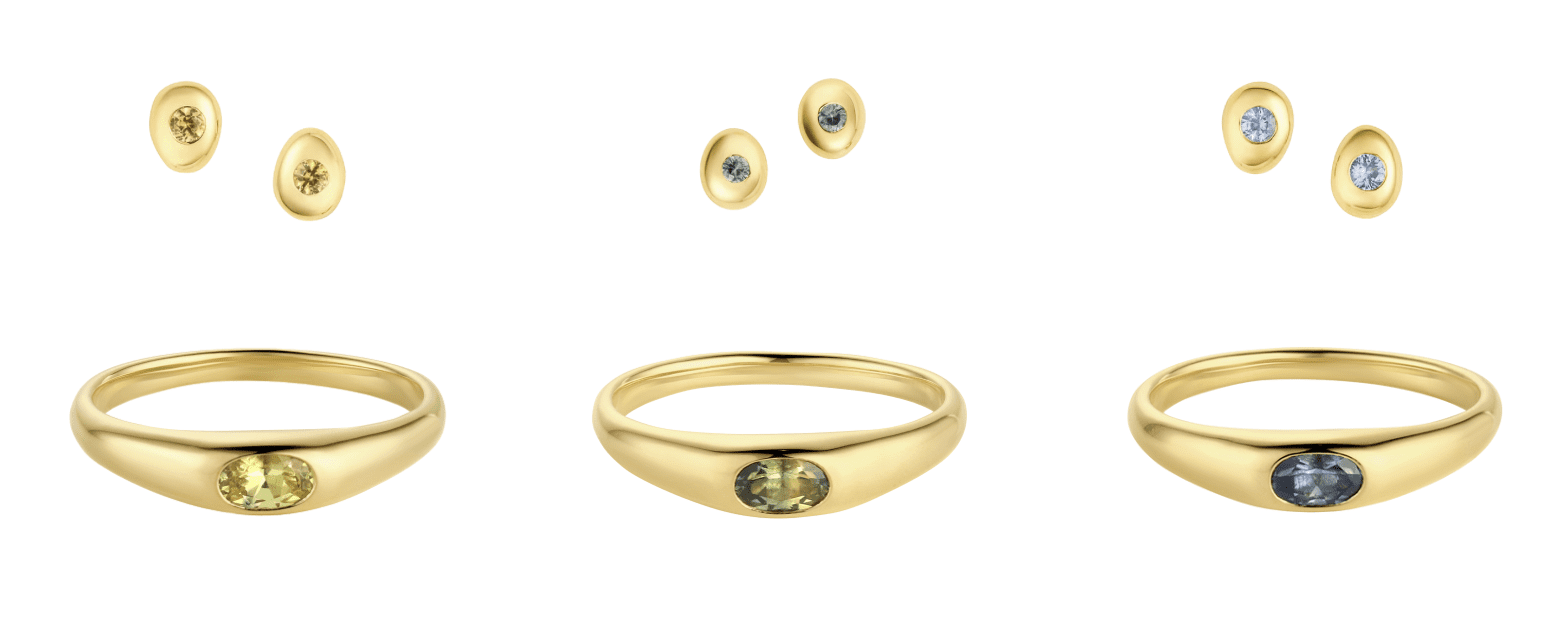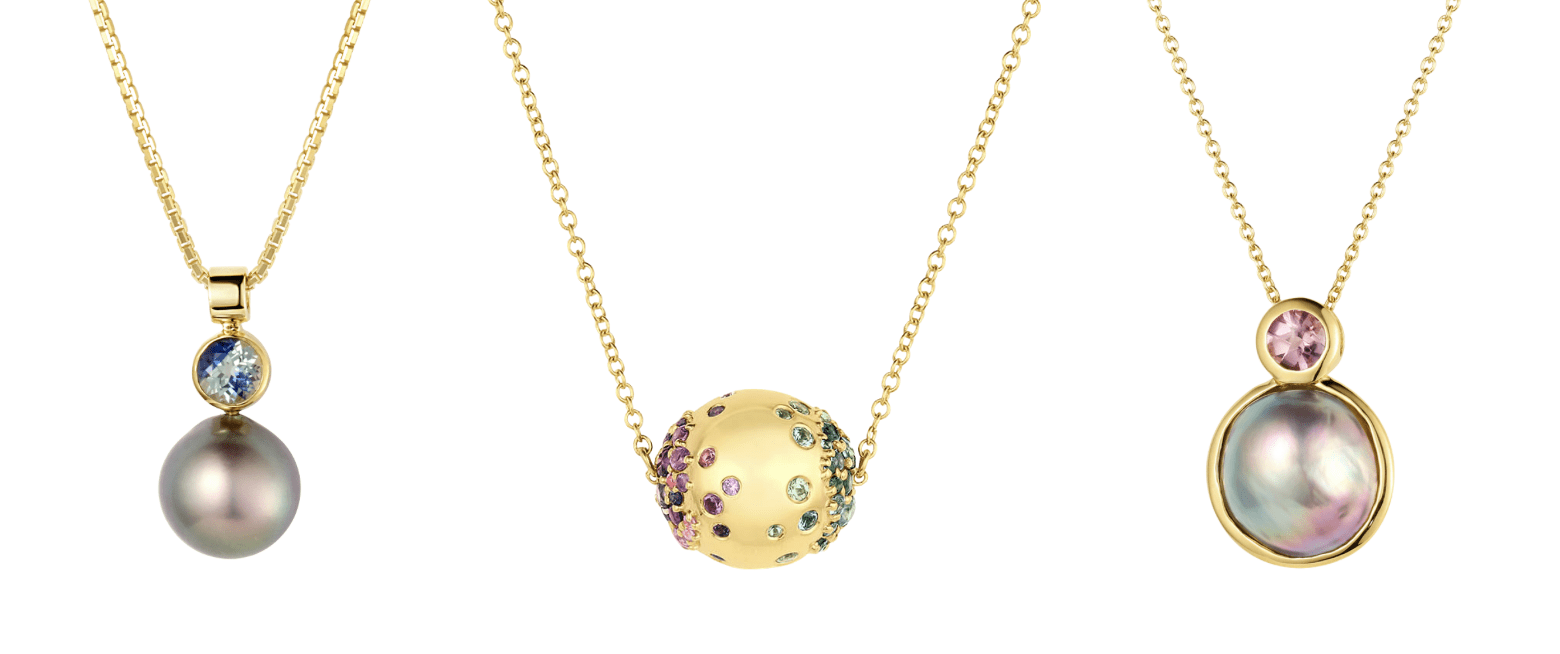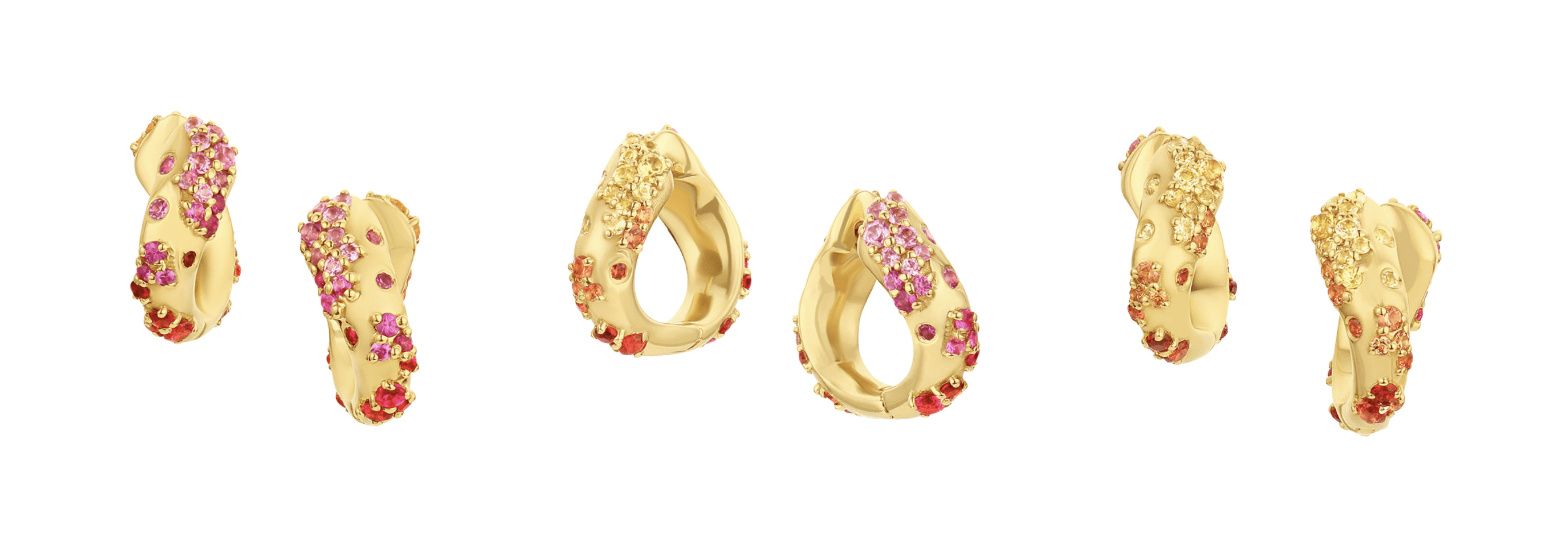At a glance: they come in all different colors, they’re very durable, and they are classic gems that will never go out of style!

Sapphires are truly magical. Most people associate sapphires with the blue variety, but they actually come in every color of the rainbow, even black, white, grey, and beige! In fancy gem nerd speak this is called “allochromatic”.
There’s one exception: red. We call those rubies!
Yes, rubies and sapphires come from the same mineral species: Corundum. At what point a pink corundum can be called a ruby or a sapphire is still hotly debated, but in general, to classify something as a ruby it must have a medium to high level of saturation, without any strong secondary hues such as orange or brown.
Some types of sapphire are more rare than others, such as padparadscha sapphire and star sapphires that display the phenomenon known as “asterism”.
When it comes to jewelry, sapphires are a great gem that can withstand everyday wear. They rank a 9 out of 10 on the Moh’s scale of hardness (the ease or difficulty with which it can be scratched). Sapphire's durability has led to them becoming an increasingly popular choice for engagement and commitment rings.

Sapphires are the birthstone for September and truly transcend time–they’ve been popular since the Middle Ages! Since sapphires have been worn and cherished across the globe for centuries, they have come to be associated with many things.
Two of the biggest? Royalty and romance.
In Ancient Greece and Rome, sapphires were worn by royalty for protection against envy and harm. Many people in the Middle Ages associated sapphires, especially blue ones, with heavenly blessings.
“Sapphires possess a beauty like that of the heavenly throne; they denote…those whose lives shine with their good deeds and virtue” —-Marbode of Rennes, 11th century poet
Blue sapphires became even more sought after when Britain’s Princess Diana wore one in her now-famous engagement ring.

So many places all over the world!
The top sapphire-producing locations are Montana (US), Kenya, Tanzania, Malawi, Nigeria, Madagascar, India, Sri Lanka, Myanmar/Burma, Thailand, Cambodia, Vietnam and Australia.
Each one of these countries produces different colors, qualities, and sizes of sapphire rough. Often, one location will become known for a specific color if there is a lot of gem quality material in that hue (for example, Montana teal sapphire, or Sri Lankan “Ceylon” blue sapphire).
Sapphires (along with all other colored gems) get their color from their trace minerals and inclusions.
While some may view inclusions as “flaws,” we view inclusions as special and wondrous characteristics that make up a part of a gemstone’s “inner world.” Plus—no two gems have the same exact inclusions, so you can think of it just like a unique identifying “fingerprint!”
That being said, if certain inclusions are ever overly distracting, or if a gem dealer wants to improve the color and uneven tone of a gem, heat treatment can be a good option.

Heat treating sapphires is a very common practice throughout the gemstone industry, and is generally accepted by consumers. Countries like Sri Lanka have a very long history of heat-treating gems, whereas locations such as Bangkok, Thailand have become hubs for treatment more recently.
While non-heated sapphires are more rare, here at BJC, we support and love heated sapphires just as much as non-heated sapphires. The most important thing for you to consider when buying sapphire jewelry is that any heat-treatment is disclosed.
Due to sapphire’s durability, they can withstand being submerged in an ultrasonic cleaner. If you don’t have an ultrasonic, warm soapy water and a brush will also do just fine!